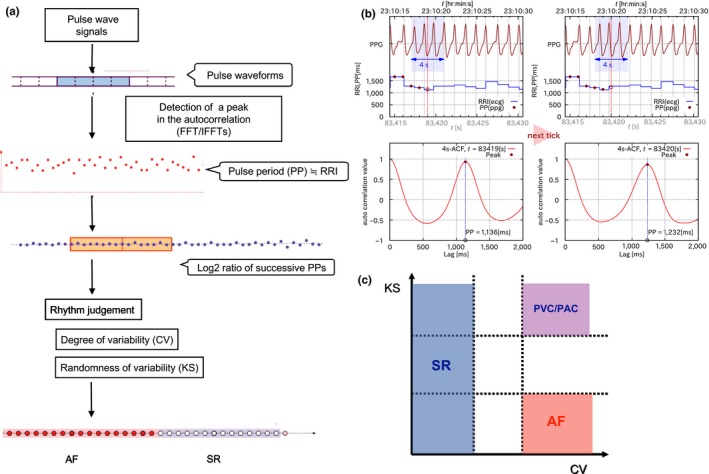Figure 1.

(a) Diagnostic algorithm: The logarithmic ratio of the successive pulse period (PP) values for each collected PP series was analyzed based on the standard deviation (SD), as an alternative to the coefficient of variation (CV) of the PP values and Kolmogorov‐Smirnov (KS) difference. (b) Pulse wave parameters: The time lag of the primary peak of the autocorrelation function (ACF) of the spectrum was regarded as the PP and assumed as the RR interval (RRI) in each time frame every 4 s. (c) Rhythm determination: When the pulse period series had low dispersion (low CV), the heart rhythm in that series was classified as sinus rhythm. When the pulse period series had both high variability (high CV) and high randomness (low KS), the heart rhythm was defined as atrial fibrillation (AF). The pulse period series with high variability (high CV) but low randomness (high KS) was assumed to have features of an atrial premature complex (PAC) or ventricular premature complex (PVC) with a constant coupling interval. In this study, we distinguished AF from non‐AF, which included SR and PAC or PVC
